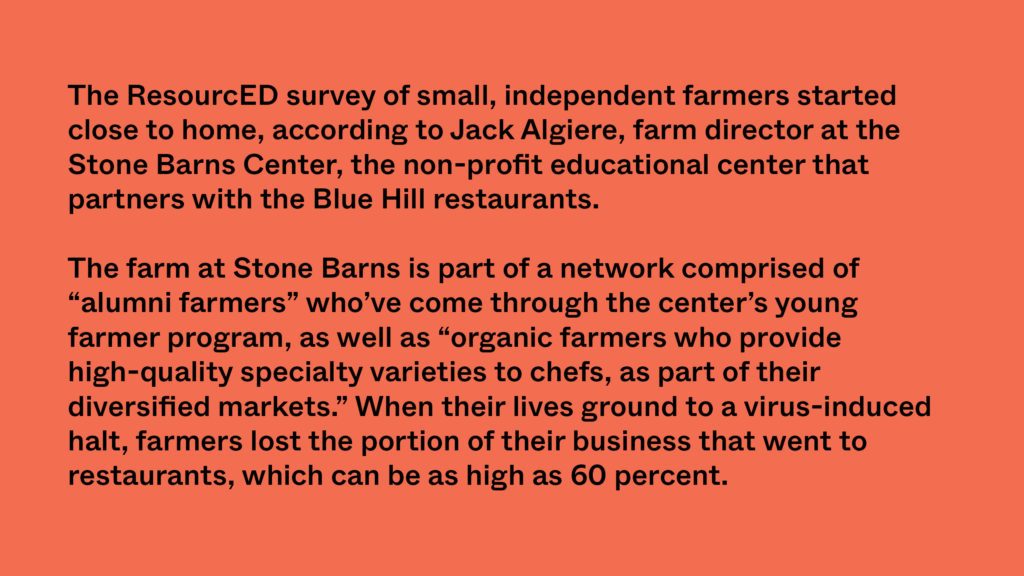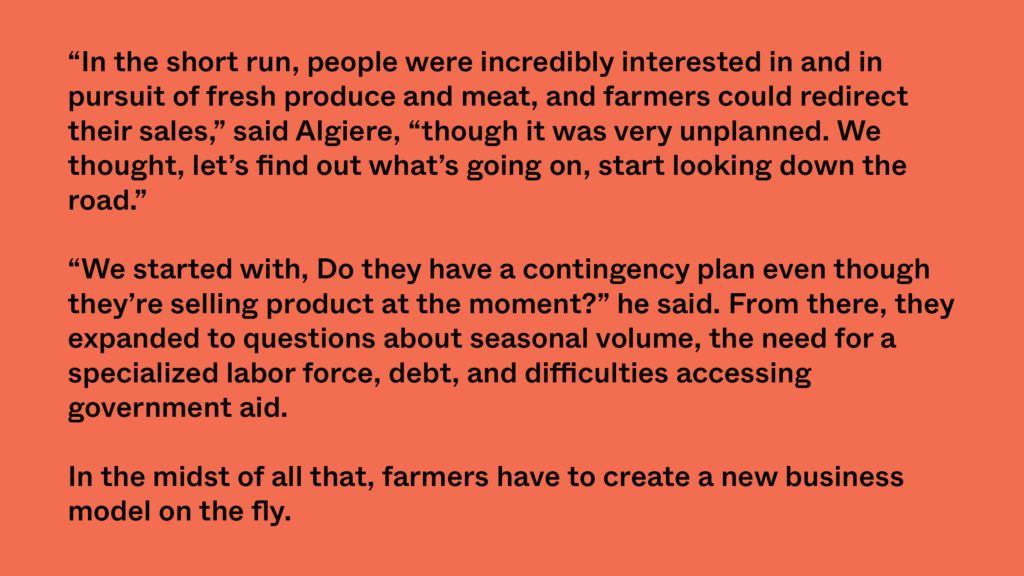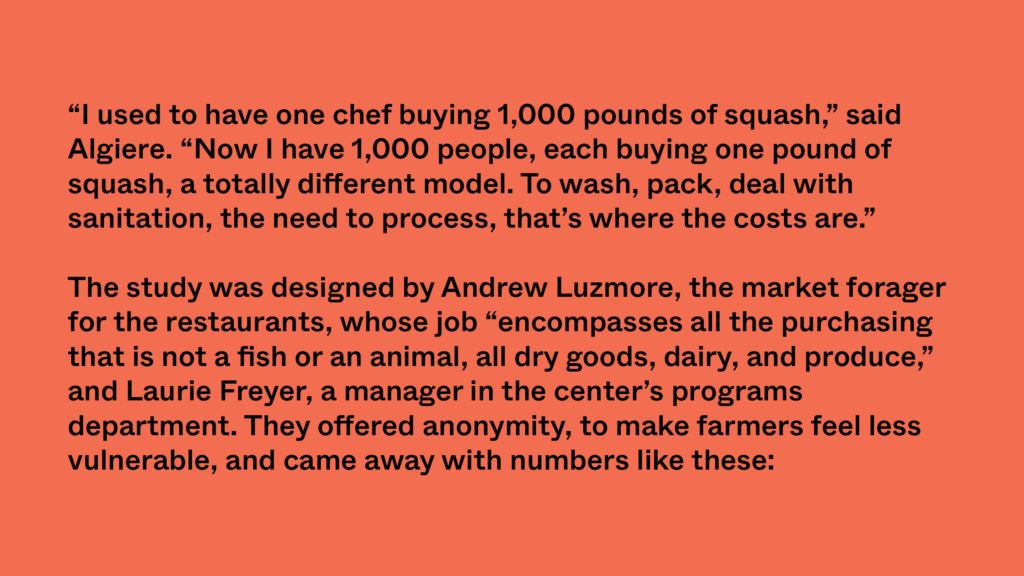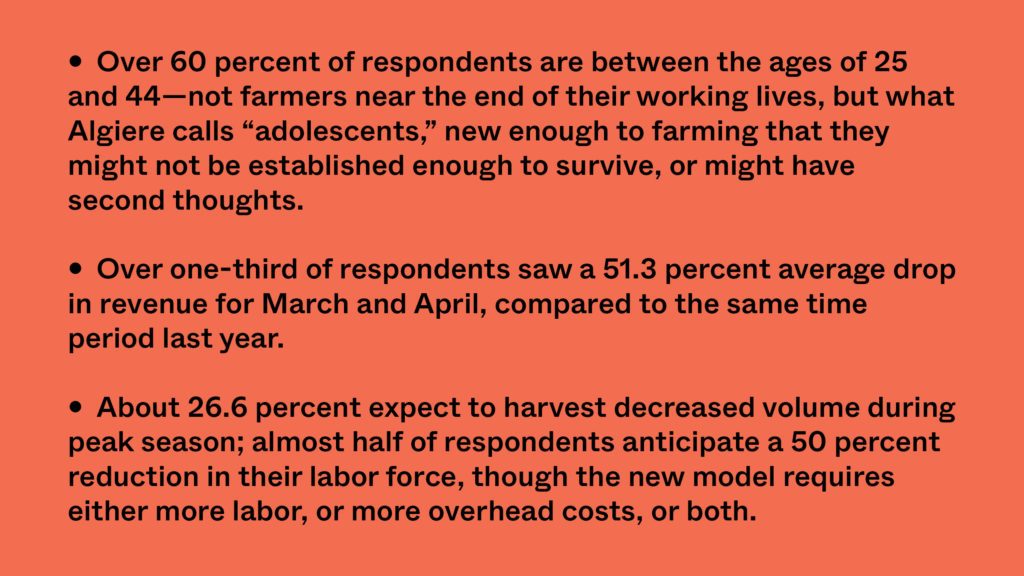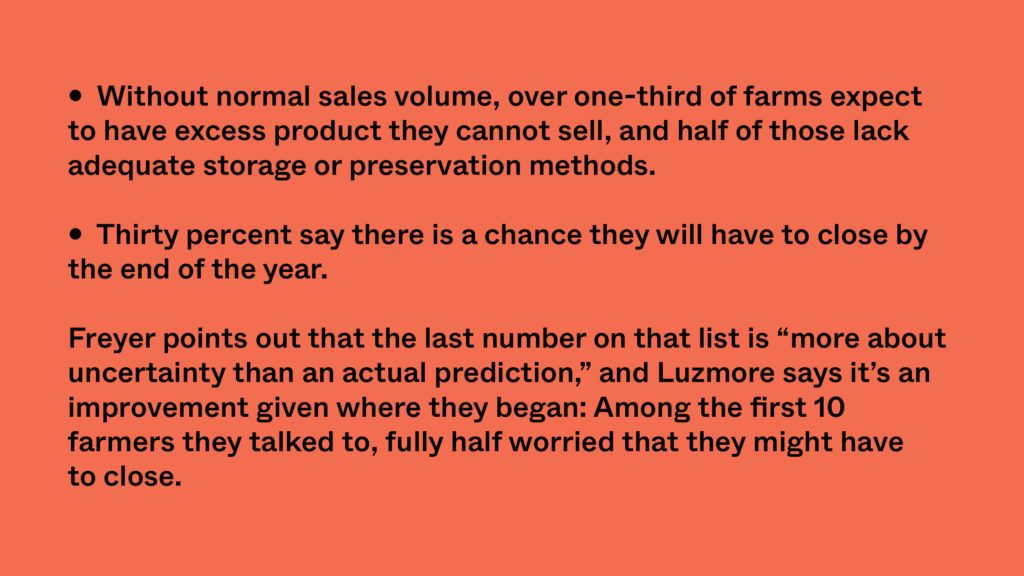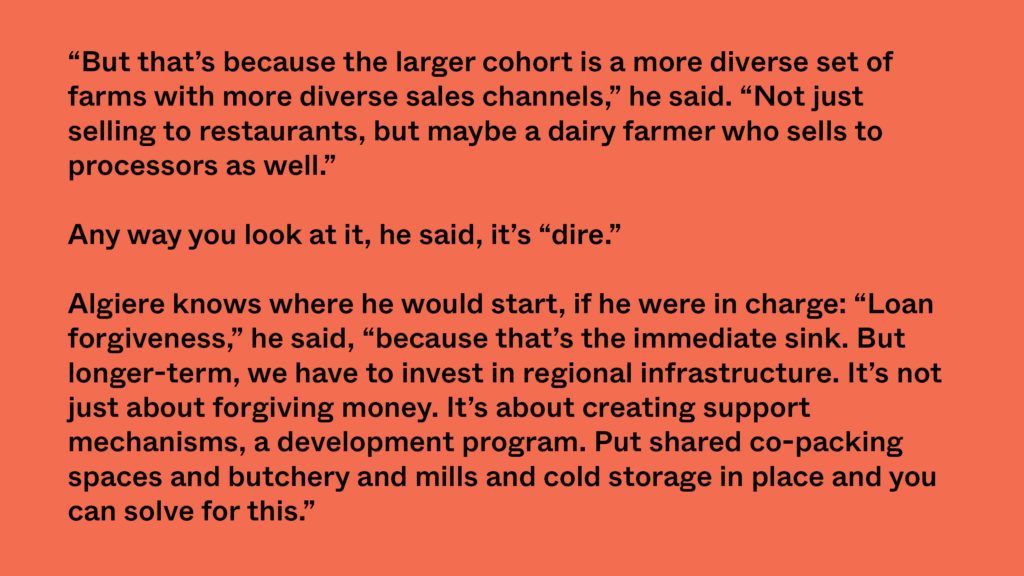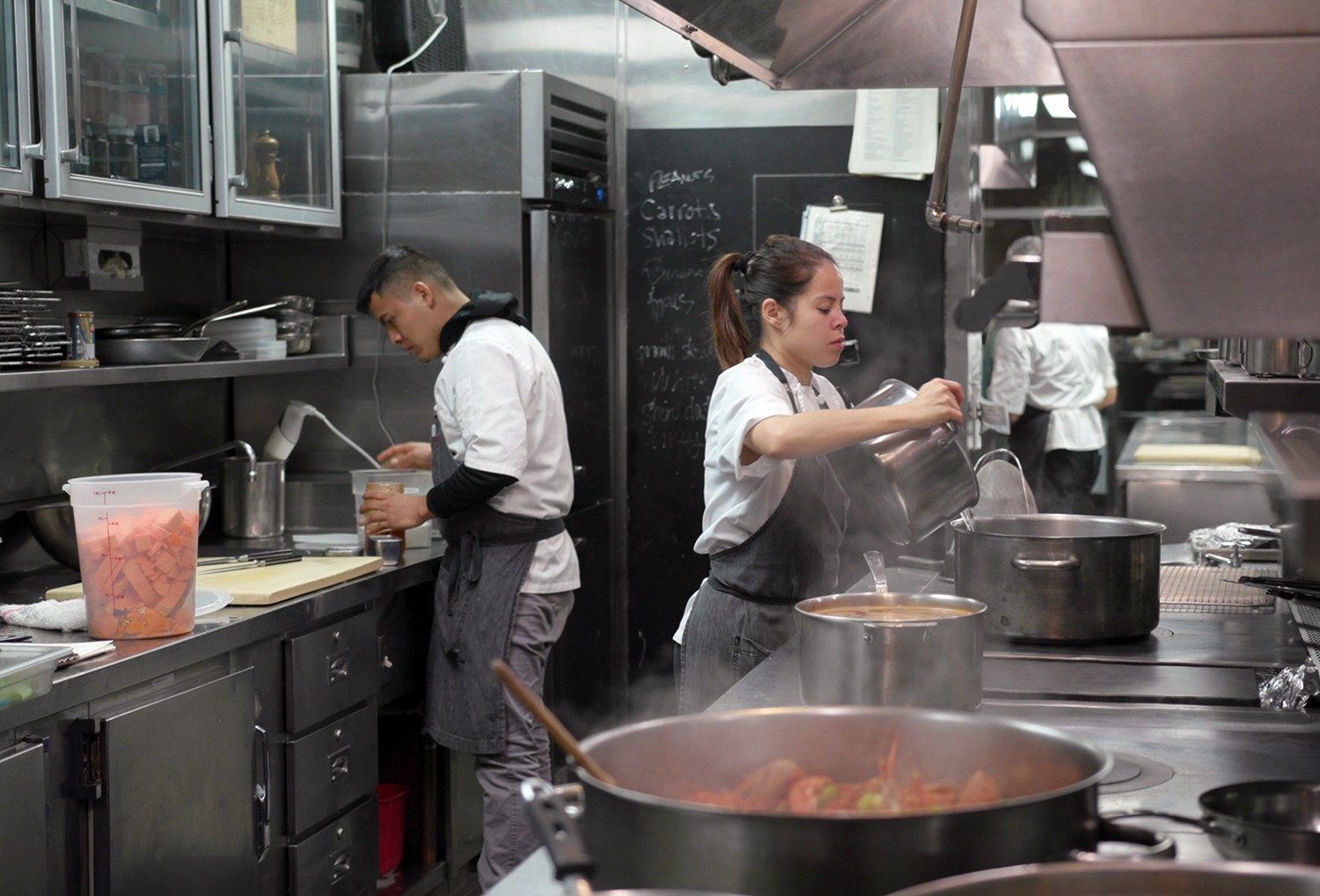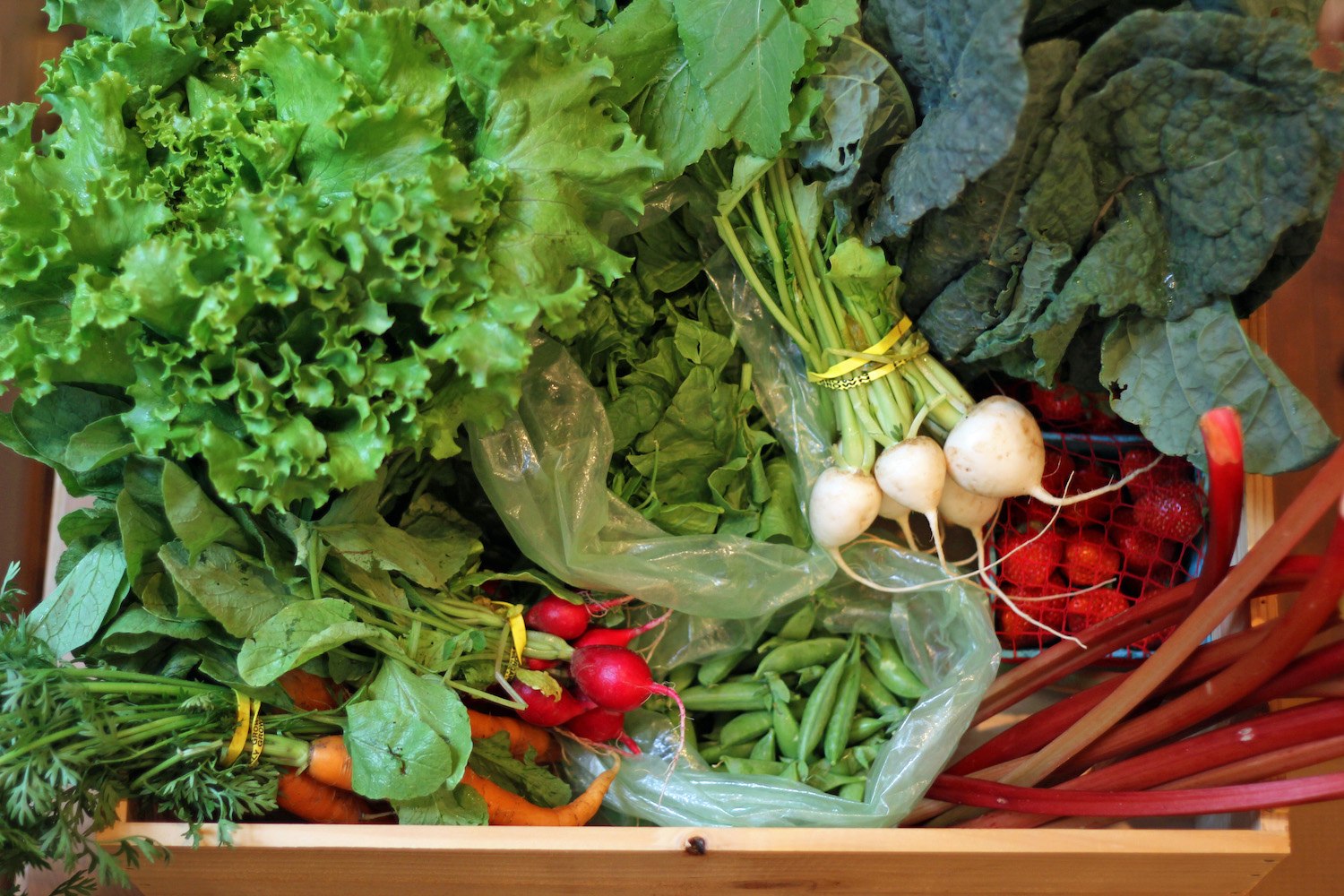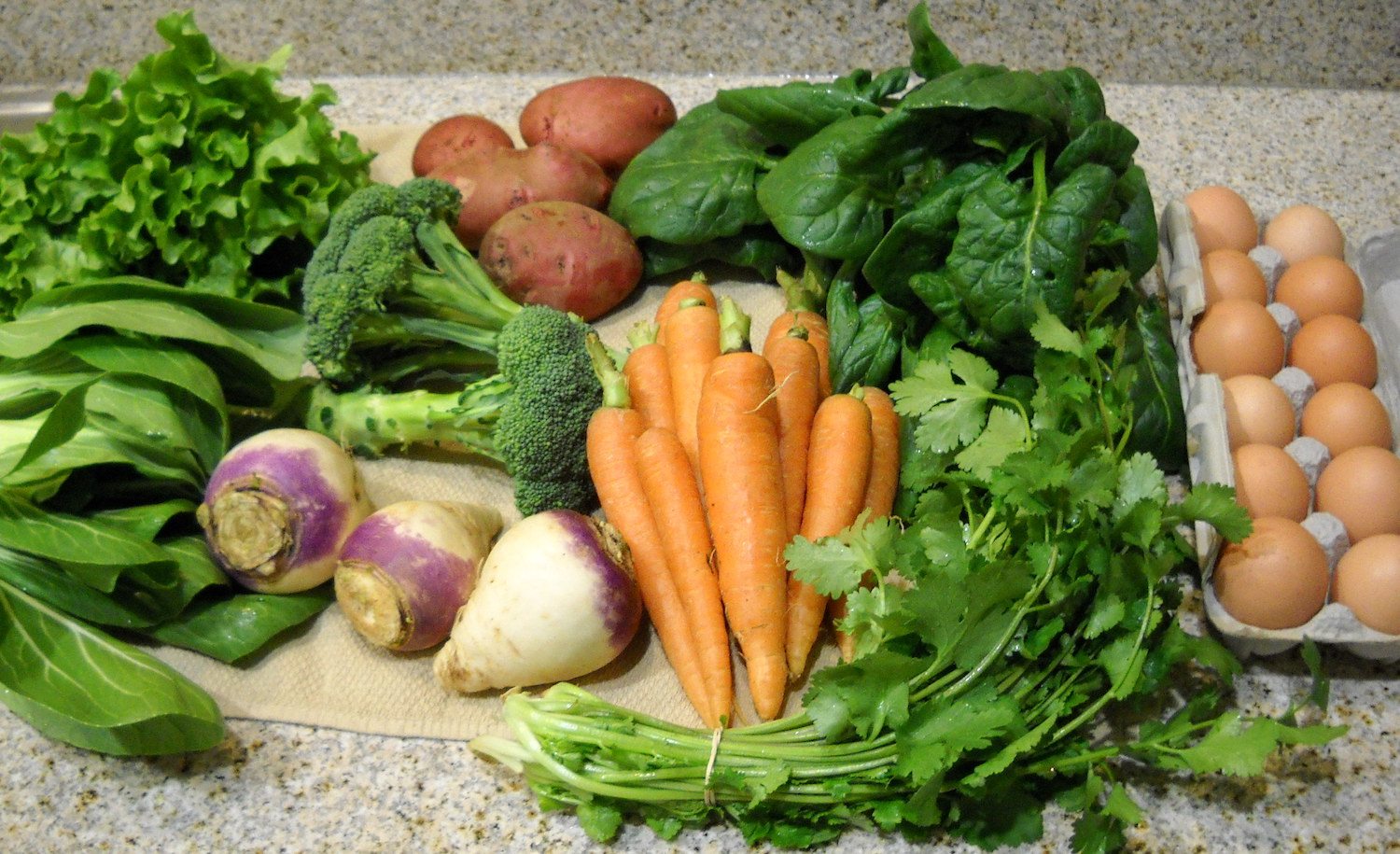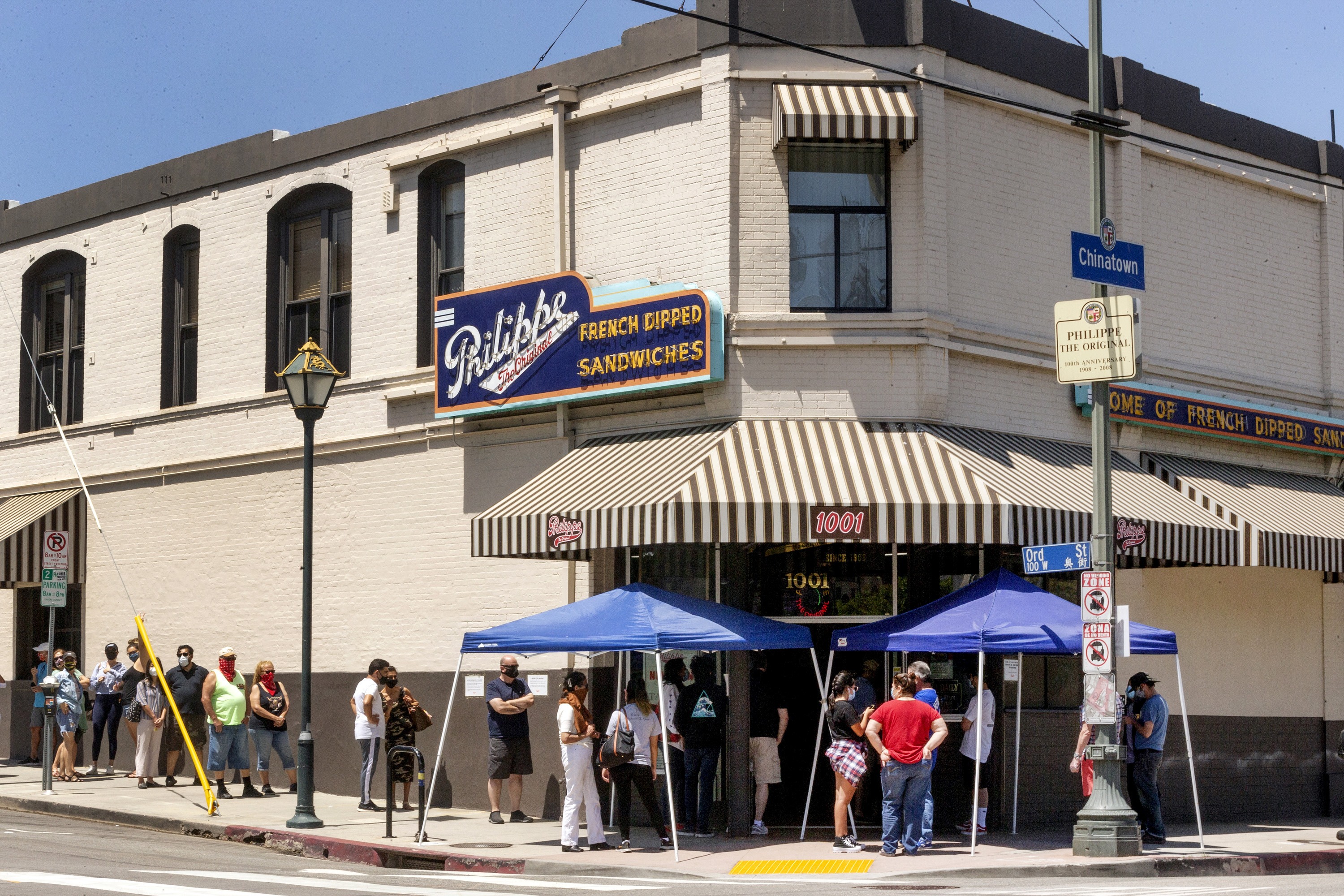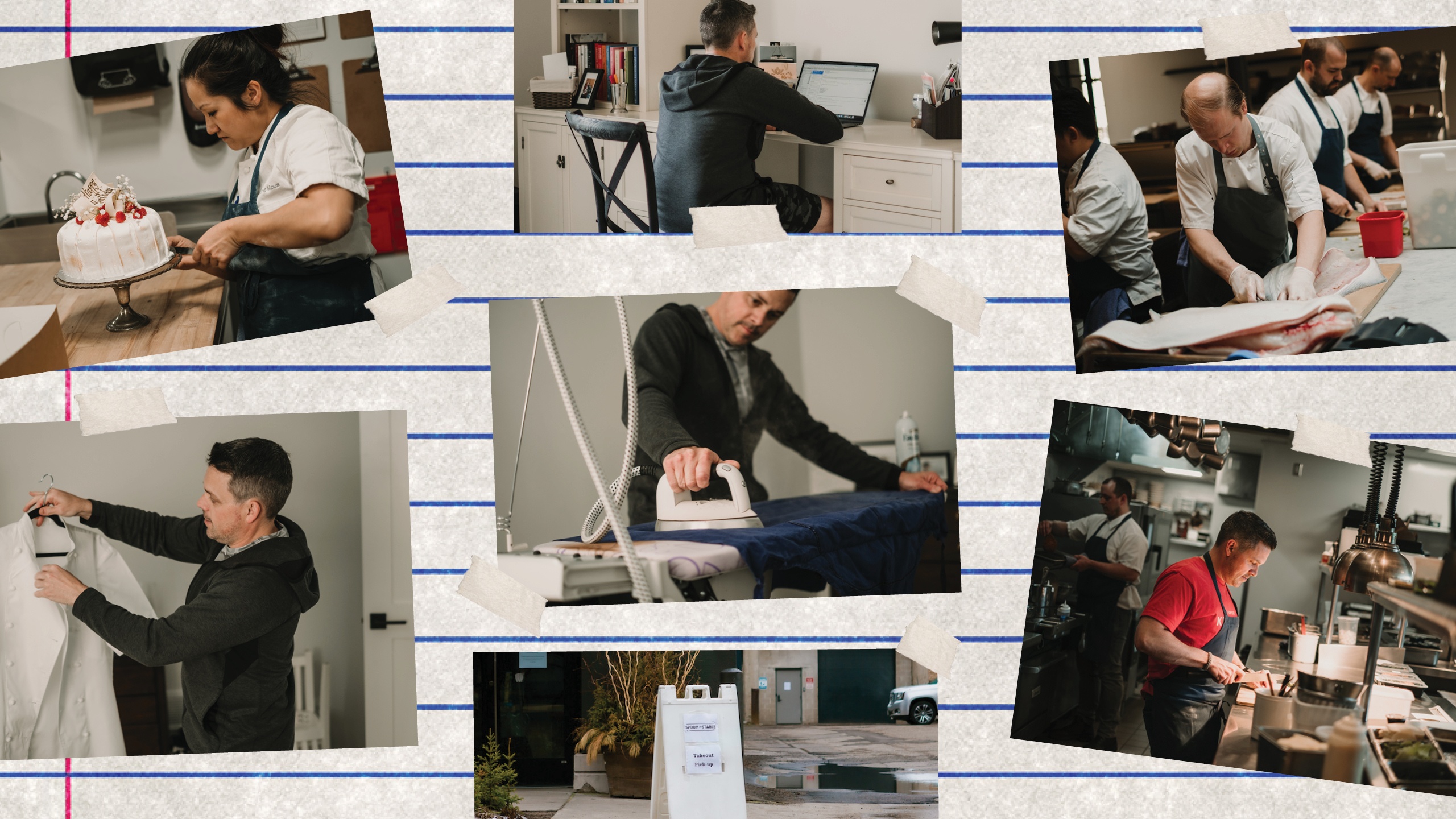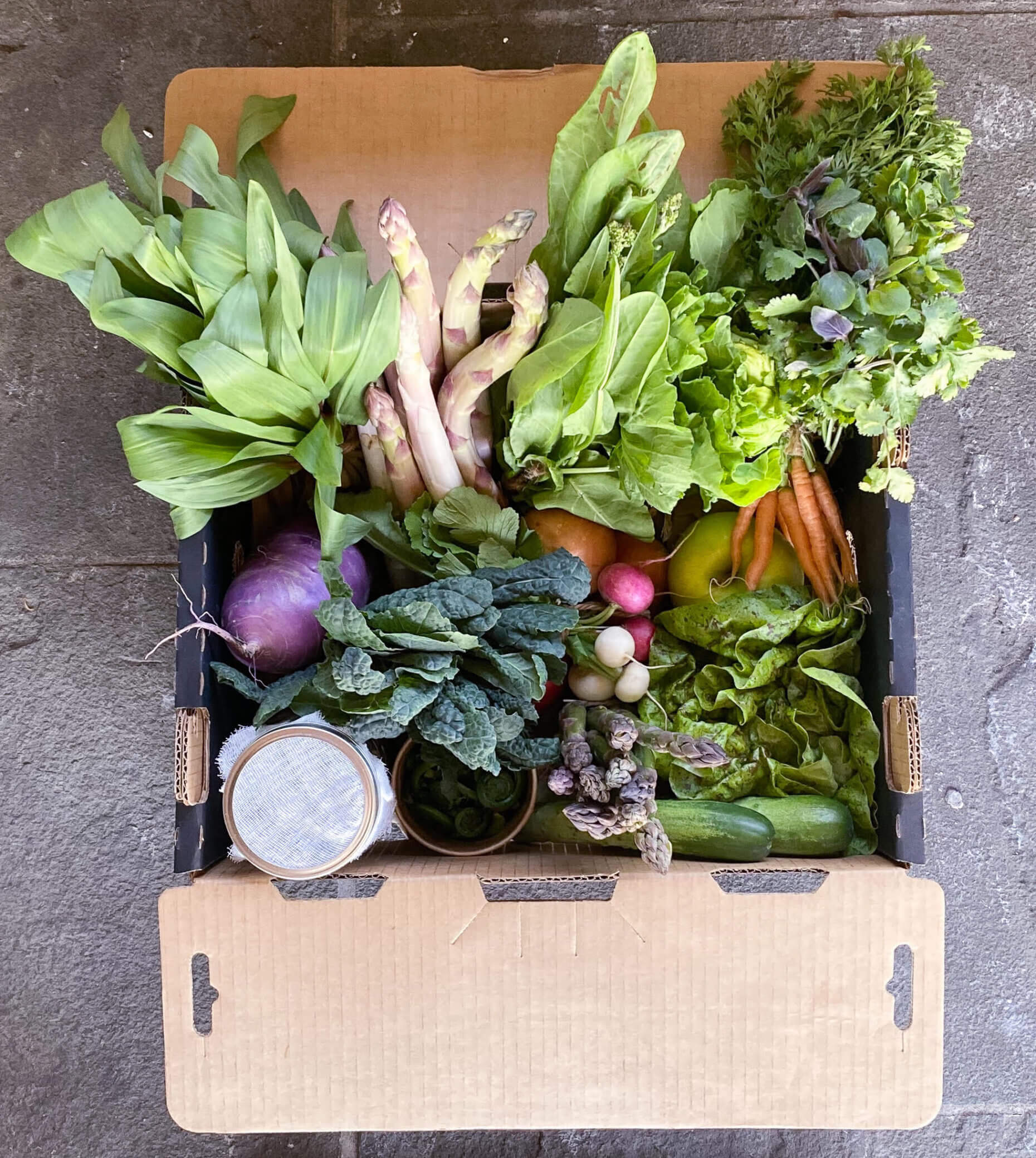
With the Stone Barns Center for Food and Agriculture, chef Dan Barber and his restaurant Blue Hill surveyed 240 farmers. The central finding: Covid-19 is “a generational catastrophe”—and without intervention, many will not survive through next spring.
It seems an oasis of good news in a desert of bad: Small farmers who saw restaurant sales evaporate and farmers’ market sales erode, in the wake of Covid-19, have found alternative ways to sell produce. They contribute to boxes sold by shuttered restaurants, sell their own boxes out of their trucks, even offer delivery. And they’re selling retail, not wholesale, so the money’s good.
If chef and restaurateur Dan Barber asks how they’re doing, the unanimous answer is, “Great.”
But Barber has only to look a few weeks down the road to see bad news coming. The current model won’t survive the peak summer harvest, says Barber, who for 16 years has run the farm and restaurant Blue Hill at Stone Barns, about 30 miles northeast of New York City, in addition to the 20-year-old Blue Hill, in Manhattan. Unfortunately, he has numbers to back him up. ResourcED, a project he and his colleagues created to sell market boxes at both restaurants, has launched a survey of small farmers, concentrated at first in the Northeast but expanding coast to coast. Between 30 and 40 percent of them predict that they won’t be able to keep up with increasing volume. They will lose the extra, essential revenue that always comes with a bountiful seasonal harvest. And while most of the farmers grow produce, the same dark predictions hold true for respondents who grow grain and raise animals. The current boom is a sweet illusion; the bust is coming fast.
Where do they expect this to end? Bankruptcy, from which many will not recover.
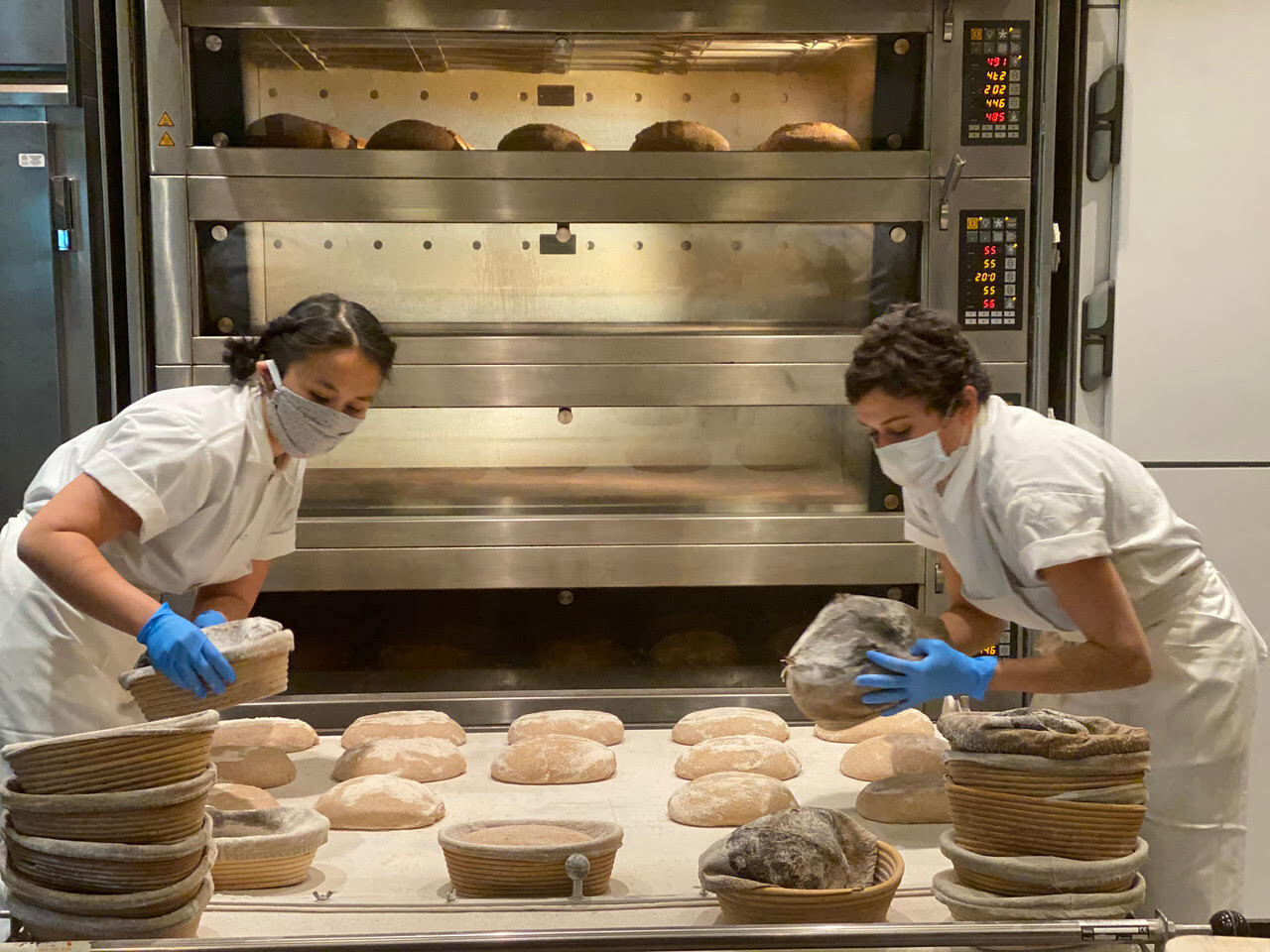
ResourcED
Barber’s restaurant, Blue Hill at Stone Barns, in Pocantico Hills, New York, and its sister restaurant Blue Hill in Greenwich Village, are temporarily closed. In the interim, Barber and his team have created ResourcED, a CSA program offering boxes filled with produce, meat, and fish from their longtime farming and fishing partners. Among the offerings are bread, pastry, and cake-themed boxes.
And most of the respondents are between the ages of 25 and 44, in the midst of their work lives, not toward the end. Almost a third anticipate that they will be out of business by the end of the year. If they’re right, the virus will take out much of a generation and leave the market ripe for takeover by larger operations.
Barber hates to be the spoilsport, but there’s a lot at stake: The future of how and what we eat, as processed-food purveyors line up across the battlefield, hoping to reclaim a market they’ve been losing for years, to cash in on a quarantined populace, Barber says, whose notion of comfort involves reheating more than it does cooking.
There will be a shift in direction, one way or the other, he’s sure of it, even as he believes that revolution has a chance against regression—that a well-informed public can define a new food culture that supports diverse small farms and tells the big brands to back off.
It won’t be easy: It requires a new definition of food processing, a cadre of food foot soldiers willing to march into the fields to save the harvest, and an embrace of what Barber sees as magnificent inefficiency, a retooled, regional food network with more, not fewer, businesses. Efficiency is overrated, as far as he’s concerned: It’s what got us to Cheetos in the first place.
This conversation has been lightly edited for length and clarity.
—
The consumer crossroads
Dan Barber: This is a moment for standing up and digging in for what we want, and not allowing big food to take the market back.
Up until seven weeks ago it was hard to see, but big food was in serious trouble—people were turning away from processed food and companies were in retreat, their numbers shockingly reduced. There were agribusiness executives saying it was the end of processed food. They weren’t just not growing but going in the opposite direction.
I talked to a food executive last week, a guy who used to say that big brands were digging their graves, trying to buy smaller brands and redirect as food culture headed toward fresher products. But this time he said, ‘It’s like morning in America; people are going back to brands.’ People aren’t cooking, they’re reheating—that’s the story, and it’s not a good one. And, he said, the products are better than they were 20 years ago, flavors are better, salt is lower, we’ve gotten better at what we do.
The short food chain has turned out not to be resilient. Didn’t take a lot to threaten a wipe-out, though you can help prevent it.
And weeks ago I would have said that the short food chain was iron-clad, a farmer selling to you at the farmers’ market, clean and direct. I’ve been an evangelist for that—but Covid has exposed its weakness. You can’t shake the hand of a farmer anymore because you’ll get a virus. The short food chain has turned out not to be resilient. Didn’t take a lot to threaten a wipe-out, though you can help prevent it.
Small, independent farms are very important, although they were still only feeding a small percentage of the population. They’re the lighthouse, the beacon, for how a food system should work, always small, always independent, always diverse. And that’s what’s plummeting. If all people want to cook at home is broccoli and carrots, you might as well grow a monoculture. Farmers are cutting diversity because it’s cheaper to grow a single crop, which is not what we want.
A boom becomes a bust
We launched a survey called ResourcED over the last four weeks, and so far we have about 240 farmers in the Northeast. You get to this question: “What happens if you’re still doing this in the summer, restaurants are down more than 50 percent, not only possible but likely, and farmers’ markets down 50 percent. What does your world look like?”
The ResourcED survey: The next generation of small farmers is scared about the future, uncertain about survival, and running out of time.
Click on the dots below to scroll through the survey’s findings.
For approaching 40 percent of the farmers, the answer is, “bankruptcy.” Totally devastating. We need to think of this in the right frame. If you just ask, How are you doing, everyone says “great.” April numbers, at least in the Northeast, were in fact great. Through the roof. But try doing that during the harvest season, when you can’t keep up with the crops, and, by the way, you don’t have enough labor.
Small farmers are the ones you want to keep around. If 30 to 40 percent of them go, that’s a generational catastrophe. That doesn’t come back.
The results are alarming—catastrophic if we don’t do something. This is not a pivot to, Oh my gosh, I never knew how good this would be, we just pack up a box for customers. Labor costs will be very high, a lot more work for a lot less revenue. If that weren’t true, farmers would’ve figured it out a long time ago.
We will look back at this as an inflection point: which way do you want things to go? And I’m pissed. We really need to take a stand. We are looking at a precarious time for the farmers we desperately need for our health, our happiness, the health of the environment. Small farmers are the ones you want to keep around. If 30 to 40 percent of them go, that’s a generational catastrophe. That doesn’t come back.
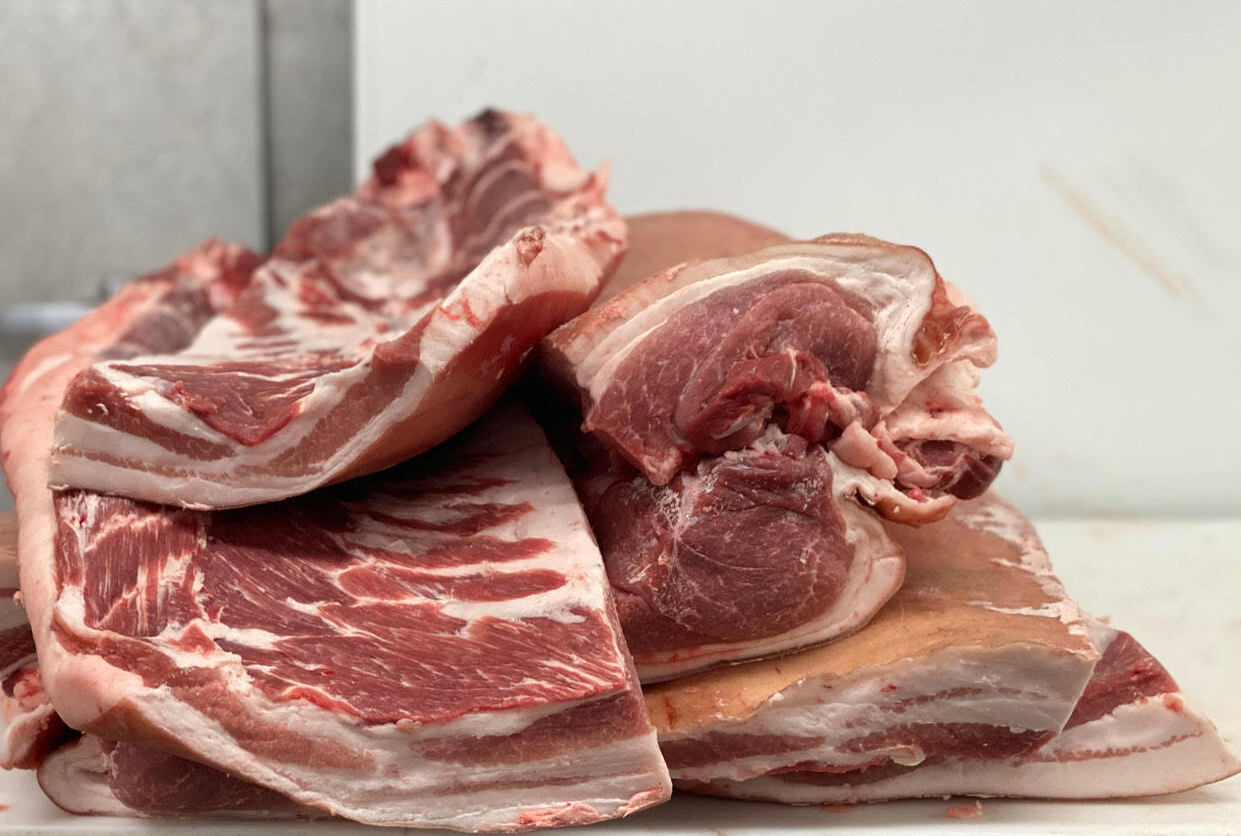
Food cultures developed processing methods mostly out of desperation and need.
ResourcED
Food processor, redefined
I was standing in the kitchen this morning, looking at two guys breaking down a pig—salt-curing, preparing charcuteries and sausages. In another part of the kitchen there was a big delivery, 10 cases of ramps that were foraged for us, being fermented. The fish delivery was a couple hundred pounds of tile fish off a day boat in Montauk, being cured and smoked and dried, I don’t even know for what. A lot of it’s for the food boxes we’re preparing.
My realization—it ranks as a revelation, really—is that I’m a food processor.
I’m not a chef, right now. I’m a food processor. But think about American food culture: That’s the most degrading thing you can call someone, next to saying they’re a Monsanto executive. Food processor? You’ve cursed them up, because our understanding of food processors is that they turn out food that’s demonstrably less nutritious and delicious, usually from a source that degrades the environment.
So farm to table needs a few more middle-men, as we redefine what food processing means.
But what if that was transmuted into something more in line with what I’m doing? Food cultures developed processing methods mostly out of desperation and need. My kitchen has figured it out.
So farm to table needs a few more middle-men, as we redefine what food processing means. It’s not degradation but improvement, which is what other cultures figured out thousands of years ago, as they were domesticating agriculture.
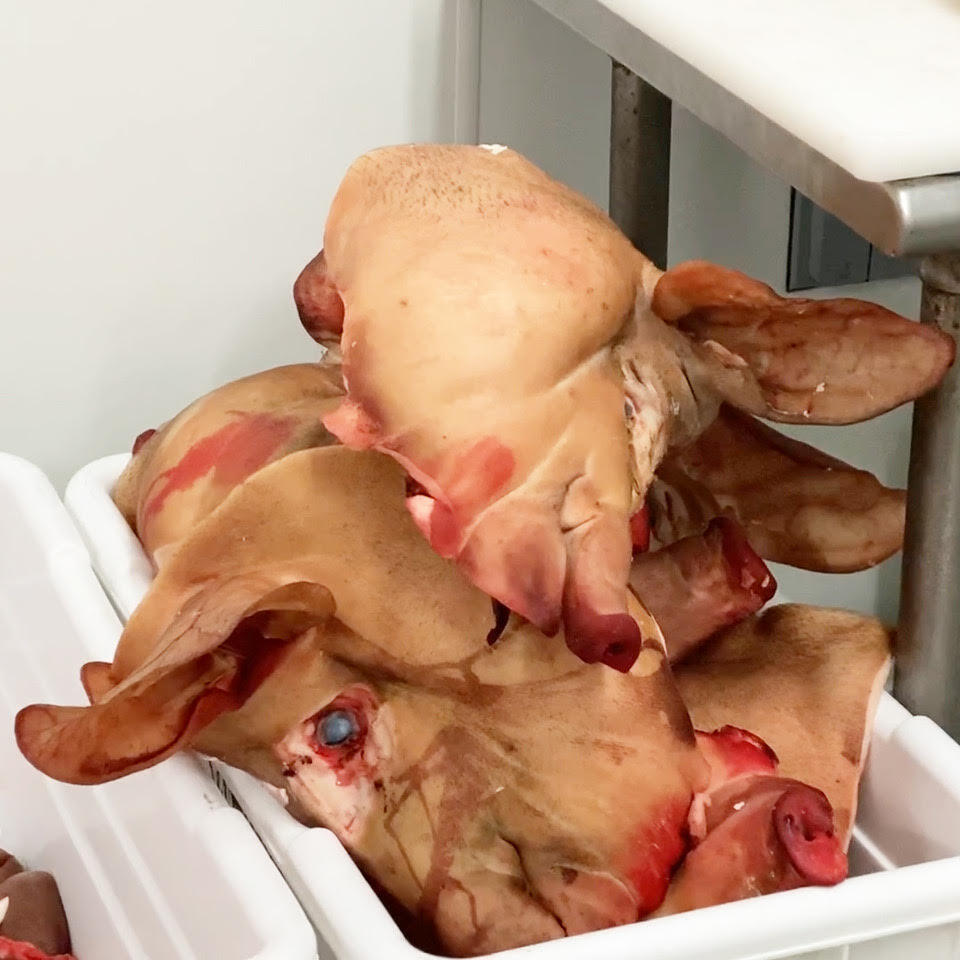
ResourcED
Regional food hubs are more efficient than big centralized options, Barber believes.
We should preserve and improve food. Restaurants, chefs have always done that, but it’s within their four walls, and the information’s tightly controlled unless you buy a recipe book. There isn’t accessibility within a region.
The short chain is short-sighted, really. In the future we have to complicate the picture. Regional hubs might look inefficient, on the face of it, because they overlap, they’re doing the same work—there’s not a central mill in Iowa but a couple of dozen. We should look at that differently. I’m looking outside at thousands of shades of green, not one. That’s the beauty of the lesson of nature. It wants diversity, it wants inefficiency.
Efficiency is death, actually. We suffer at the whim of a consolidated food system that overall has some efficiencies and is cheaper, but in the end is not worth it.
Short-term intervention
With summer coming, I’d like to see a harvest corps, out-of-work cooks and restaurant people to help harvest summer fruits and vegetables. And people don’t understand about migrant workers: they think that only happens in Florida and on the west coast, but it’s in the Hudson Valley, they follow the harvest in the Northeast, and we need to create an awareness of that need. We need to get product into the bigger food chain, as well, maybe have bigger companies buy from these smaller farms, supermarkets buy from these smaller farms, it hasn’t been explored enough, but if there are tax breaks, incentives, it could work.
With summer coming, I’d like to see a harvest corps, out-of-work cooks and restaurant people to help harvest summer fruits and vegetables.
We’ve talked to Senator Kirstin Gillibrand’s office, they have introduced legislation for small, independent farmers, and it’s complex, so we want to give them some information on what we’ve learned. From what I understand, the Senator has proposed legislation for relief, but I’m hoping that in the end it goes beyond loans—because the survey is clear, that most farmers will not take on more loans under any circumstance.
Long-term revolution
This is where we can have an impact: helping to create a framework for a regional food system. It’s not just small and diverse players who are fragile; big players are as well, though I don’t feel bad for them at all. I feel bad for the small farmers. They’re the ones who will bear the brunt of this, who can’t send their animals to slaughter at the moment they’re of market weight, and that’s expensive.
Who’s going to be hurt by this? Not the processor but the farmer. It’s always the farmer—something goes wrong and they get screwed. These big multi-nationals say they’re here to help the farmers, but look at the last 20 years—that’s not what they do.
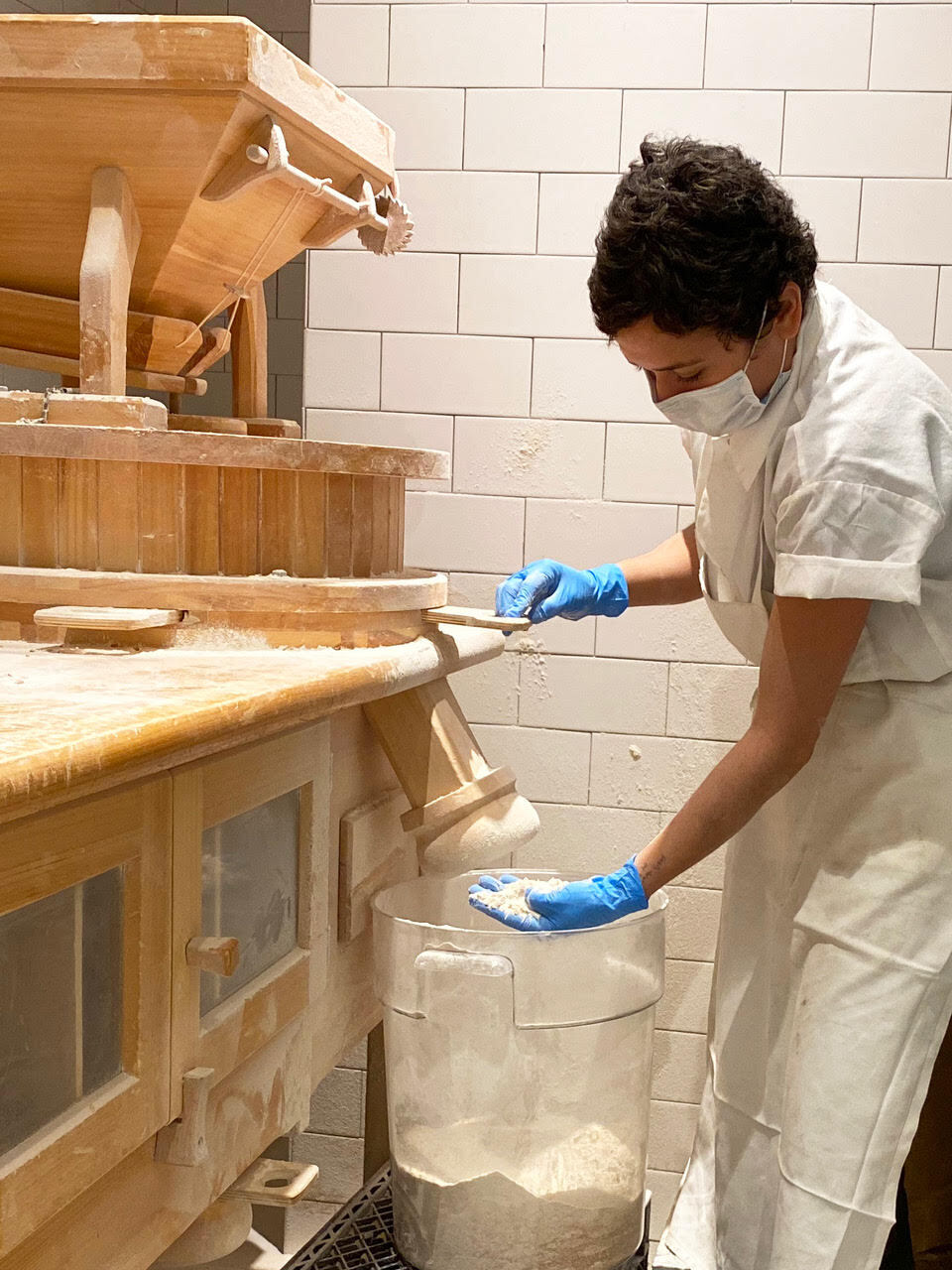
ResourcED
“Our understanding of food processors is that they turn out food that’s demonstrably less nutritious and delicious, usually from a source that degrades the environment,” said Barber.
Fifty years ago, Alice Waters reacted to the moment in time, at Chez Panisse. She was the leader of a counter-culture movement in food. Now it’s not so much a counter-culture as creating a new culture, and culturing’s the right word—you’re fermenting, you’re creating a cheese, or pickling, or hundreds of other processes that we term “culturing” food. Not a counter-culture but a food culture, which is more difficult to articulate. Maybe this is the moment to try to explain it.
There are a couple of things you can activate as a home cook. First, as Michael Pollan so beautifully said, you vote with your fork—so go out of your way to a farmers’ market, to a market that supports local farms, support them and be aware of your food choices as much as you can. It may cost a little more, and maybe you can’t do it every day, but that’s very powerful if you can, and it’s critical, especially now.
And support restaurants that are critical to this. Restaurant culture is a big deal, for better or worse, an enormously powerful cultural imprint. At this moment—when we’ve been gutted—there are lots of ways to support restaurants. Buy whatever they’re selling at the moment, and when they re-open, spend your food dollars in places that do the right thing.
It takes more work to make legislators more aware of food issues, but it’s not impossible. There are legislators who vote on this stuff. You can advocate by supporting them.
